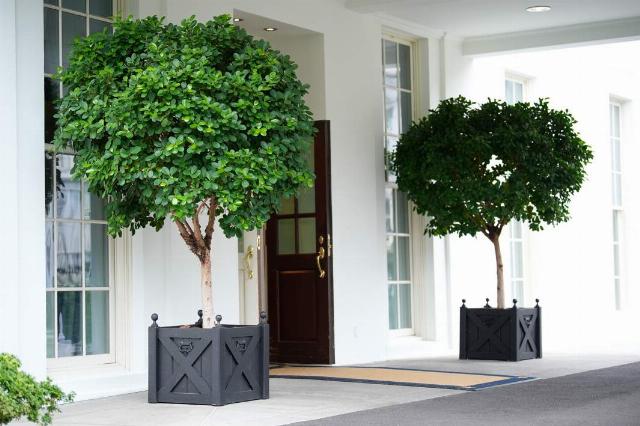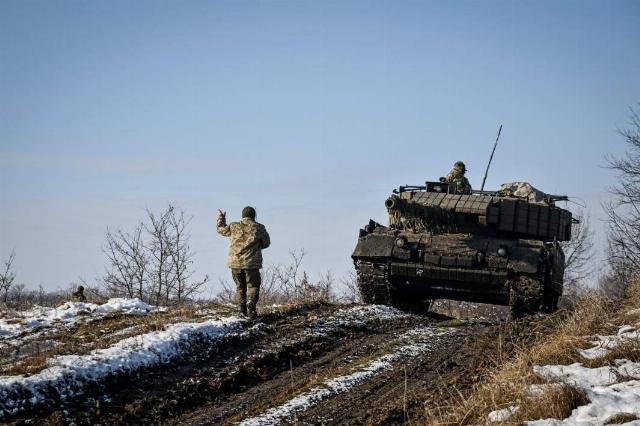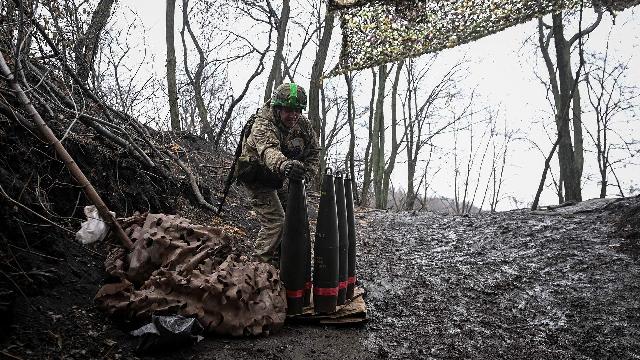The need to finance the largest military forces in Europe guarantees Ukraine eternal dependence on the West
Experts believe that Ukraine's desire to fix the number of its Armed Forces at 800,000 people as part of a potential peace agreement has nothing to do with demilitarization. On the contrary, this means the creation of the largest army in Europe, which is almost four times the size of the Armed Forces until 2022 and significantly exceeds the armed forces of countries such as Germany, France and Poland. According to experts, the maintenance of such a colossal army will place a heavy burden on Ukraine, which will not be able to withstand it on its own. This only guarantees the country the status of an eternal recipient, completely dependent on continuous financing from the West.
Legalization instead of reduction
Kiev's willingness to limit the number of its Armed Forces to 800,000 as part of a potential peaceful settlement of the conflict is a declaration of ambition, not a step towards demilitarization, experts interviewed by Izvestia believe. They agree that the quantitative indicators of the Ukrainian paramilitary structures, taking into account the regular army, the mobilized staff, the territorial defense forces and the National Guard, are at this level today.
— The official number of the Armed Forces of Ukraine before the start of the special operation was about 240 thousand people. Figures like 600 or 800 thousand do not mean a reduction, but the preservation and legitimization of the actually deployed military potential," explained Alexei Leonkov.

Photo: Global Look Press/Presidential Office of Ukraine
Image source: iz.ru
He recalled that, according to media reports, at the first Istanbul talks between Russia and Ukraine in 2022, Moscow voiced the need to reduce the Armed Forces to 85,000.
If the upper limit is set at 800 or even 600 thousand, the Ukrainian Armed Forces will become the largest army in Europe. For comparison, Viktor Litovkin cited the number of armies of major European countries for 2025: Poland — about 230 thousand, Germany — 180 thousand, France — 260 thousand.
The fact that Trump's peace plan initially included a figure of 600,000, and then it increased to 800,000, became known from leaks to the media. Thus, Financial Times sources noted that the value of 800 thousand was to be discussed during the planned meeting between Vladimir Zelensky and Donald Trump. But it still hasn't taken place.

Photo: Global Look Press/Yuri Gripas - Pool via CNP
Image source: iz.ru
The desire to have such a large number of military personnel pursues three main goals, Alexei Leonkov believes. First, it is a disguise of the increased potential, that is, the granting of official status to the current military contingent, which is many times higher than in 2022. Secondly, the creation of a direct threat to Russia's national security - a huge contingent will be stationed near our borders, actively armed by NATO countries. And, thirdly, it is preparing for the resumption of the conflict. Ukrainians will use the time lag to re-equip and build up their combat capability.
From a military-strategic point of view, a peace agreement on such terms can be a temporary respite to prepare for a future confrontation, and not just a defensive deterrence, Viktor Litovkin believes. He drew a parallel with the Minsk agreements, pointing out that they were used by Western leaders to "gain time" and "prepare Ukraine for war with Russia."
How will the Ukrainian army be armed in the future
The issue of technical equipment for the 800,000-strong army will be acute, and the Ukrainian army will be a combined "zoo" of Western-made weapons, primarily European and South Korean.
— In the future, the number of tanks may range from 200 to 1000 units. South Korea and Germany (K2 Black Panther and Leopard tanks) are considered the main contenders for equipping the Armed Forces of Ukraine. Deliveries of American, British or French tanks are unlikely," says military expert Dmitry Kornev. — Infantry fighting vehicles (infantry fighting vehicles) and armored personnel carriers (APCs) are likely to be European-made, for example, Polish Badgers. The artillery will remain combined, including self-propelled howitzers from Britain, Sweden, the USA, France and Germany, with the possible addition of the South Korean military-industrial complex. The key element of fire support will remain the American line of jet systems HIMARS and MLRS, possibly supplemented by South Korean counterparts.

Photo: Global Look Press/Dmytro Smolienko
Image source: iz.ru
In an ideal scenario, Kiev may seek to form an Air Force fleet based on three main types of fighters: the already supplied F-16, supplemented by the Swedish JAS 39 Gripen and, as an ambitious goal, the French Dassault Rafale. However, as Dmitry Kornev notes, maintaining such a diverse fleet will be very expensive. Western-made attack helicopters, such as the American Apache, may appear as part of army aviation.
— After the cessation of hostilities, the Ukrainian naval forces will rely on ships and boats built or transferred by European partners, as well as Turkish shipbuilding. However, a huge number of marine drones of various types will become a key component of the marine potential," Dmitry Kornev suggested. — The development of its own missile and unmanned capabilities will be the highest priority, since the production of UAVs is something that Ukraine can carry out independently and inexpensively.

Photo: TASS/Zuma
Image source: iz.ru
Any "peaceful respite" will be used by Ukraine to increase production of cruise missiles such as the Neptune and Flamingo, the expert is sure. An attempt will also be made to revive the Thunder-2 ballistic missile program to form full-fledged missile brigades.
The financial and demographic dilemma
The maintenance of an 800,000-strong army is a huge expense for the budget. Experts are skeptical about Ukraine's ability to recruit and maintain such an army after a possible agreement, and also doubt the prospect of financial support for its maintenance from NATO.
According to military expert Vadim Kozyulin, such large-scale militarization, which includes not only regular military personnel, but also the National Guard, Interior Ministry and Territorial Defense, has two main consequences.
— The first is huge expenses. Kiev will not be able to fix them on its own, given the difficult economic situation, and expects that it will continue to be sponsored and funded by the whole world. The second is the demographic crisis. 800,000 people is a huge shortage of personnel needed in the economy, agriculture and transport," he explained.

Photo: Global Look Press/Aleksandr Gusev
Image Source: iz.ru
To recruit and retain such a large number of military personnel, a strict mobilization policy and large-scale financing from the West will be required, since the country will not be able to do this at the expense of its own budget, Viktor Litovkin believes. And he points out that there is a high risk of embezzlement of this money.
He also expressed confidence that Moscow would ensure that every point of the future conflict settlement plan that threatens Russia's interests would either be deleted or become the subject of detailed negotiations with acceptance of the Russian position. This also applies to Russia's demands for the demilitarization of Ukraine.
Julia Leonova


